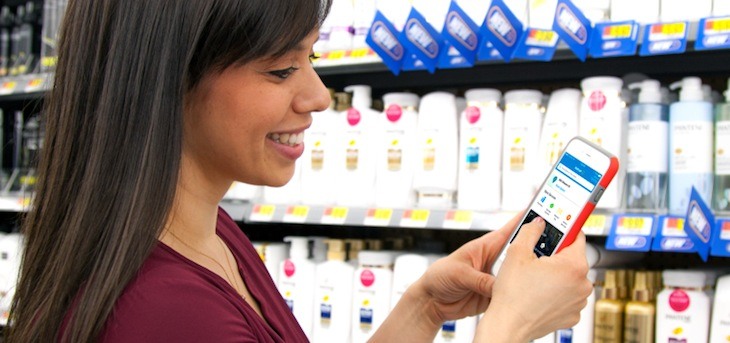Retail growth expected to continue, led by online, discounters
by February 17, 2019 12:06 am 576 views

(photo courtesy of Walmart Inc.)
The retail landscape is changing but that’s not all bad, according to Kantar Research analyst Tim Campbell, who recently outlined his projections for retail growth by shopping channel in a public webinar.
Campbell said the forecast for growth in retail sales over the next five years is strong. He expects growth in 2019 will eclipse a solid 2018, but said most of the gains will likely take place in the first six months of the year.
Campbell said brick-and-mortar growth will be led by drug stores, small formats and discounters. Total growth projections out to 2023 for retail sales is 4.7%, according to Kantar.
Looking specifically at shopping channels, Campbell reported the following growth expectations over the next five years.
Apparel Stores, 2.3%
Clubs like Costco and Sam’s, 4.4%
Category specialty stores, 3.1%
Convenience stores, 2.7%
Discounters like Aldi, TJ Maxx, 7.4%
Drug stores, 4.5%
Supercenters, 1%
Mass retailers 0.3%
Online retailers, 15.8%
Supermarkets, 2.3%
Campbell outlined a few motivators to help fuel that growth in the short term, saying the tax stimulus and higher housing prices are positives in the short term for consumers which largely hold the key to future growth. He said consumer confidence and a strong job market are stabilizers to his growth predictions, while rising production costs and tariffs present disruptive challenges.
He said shoppers are more demanding and better equipped than they ever have been in history. He said as optimism about the overall economy has cooled, shoppers are looking to to maintain, not increase or decrease, their spending. He said consumers are shopping fewer retailers today compared to the last several years. Campbell said retailers have to present value and shopping convenience to stay relevant today in the minds of consumers.
“Consumers are not willing to trade off price for quality or healthier products because they want it all,” Campbell said. “As a result, shoppers are increasingly deal-seeking for low prices on quality items, aided by easy online shopping.”
Campbell outlined five areas where retailers and suppliers will have to do more with less this year and beyond: Footprint, Growth, Product, eCommerce and Operations.
He said as 2018 was a year of hundreds of store closings in an oversaturated market, he expects retailers will be more focused on updating, remodeling and investing in the stores they have now, adding very few new units, unless they are concept stores like the Sam’s Club Now store in Dallas, Texas which is a tasting lab for innovation that can be later used across the retailer’s larger clubs.
Looking at growth, he said retailers can no longer rely on the influx of new shoppers and they must instead find ways of securing the loyalty of existing shoppers. He said they can do that by adding services and other solutions for consumers beyond just being a place to buy things.
Walmart is doing that with its tax preparation services in stores across the country as well as its expanded money and financial services that allow for big pay or money transfers at a reduced price compared to other options. Campbell said the drugstore channel has been the most aggressive at adding services with giant mergers and partnerships to expand services across their expansive U.S. footprint. CVS acquired Aetna to help it become more of a healthcare destination for information and services. He said Walgreens is working with Sprint and FedEx to add services in its stores and it’s also partnering with Kroger to be a store within a store.
He said retailers and suppliers are also rethinking products and moving from a “one-for-all” mindset to a “one-for-one” mentality. He said challenger brands and low-priced private brands have been a challenge and disruption to the status quo. He said supplier brands must respond with their own differentiated and curated offers that give shoppers more reason to buy their products.
Campbell said after years of test-and-learn experiments with e-commerce, retailers need to now begin scaling what works and abandoning what doesn’t. He expects to see more focus on fulfillment speed and filling shopper satisfaction gaps with bigger repercussions for those retailers who don’t perform. He said operationally, retailers are likely to move from being profit-focused to a more shopper-centric focus. He said retailers know they must keep the shopper in mind as early as possible within their internal operations in order to create growth rather than manage decline.
“Be where the shoppers are, that’s where the growth will be. Align with them wherever they are, the sooner the better,” Campbell said.
